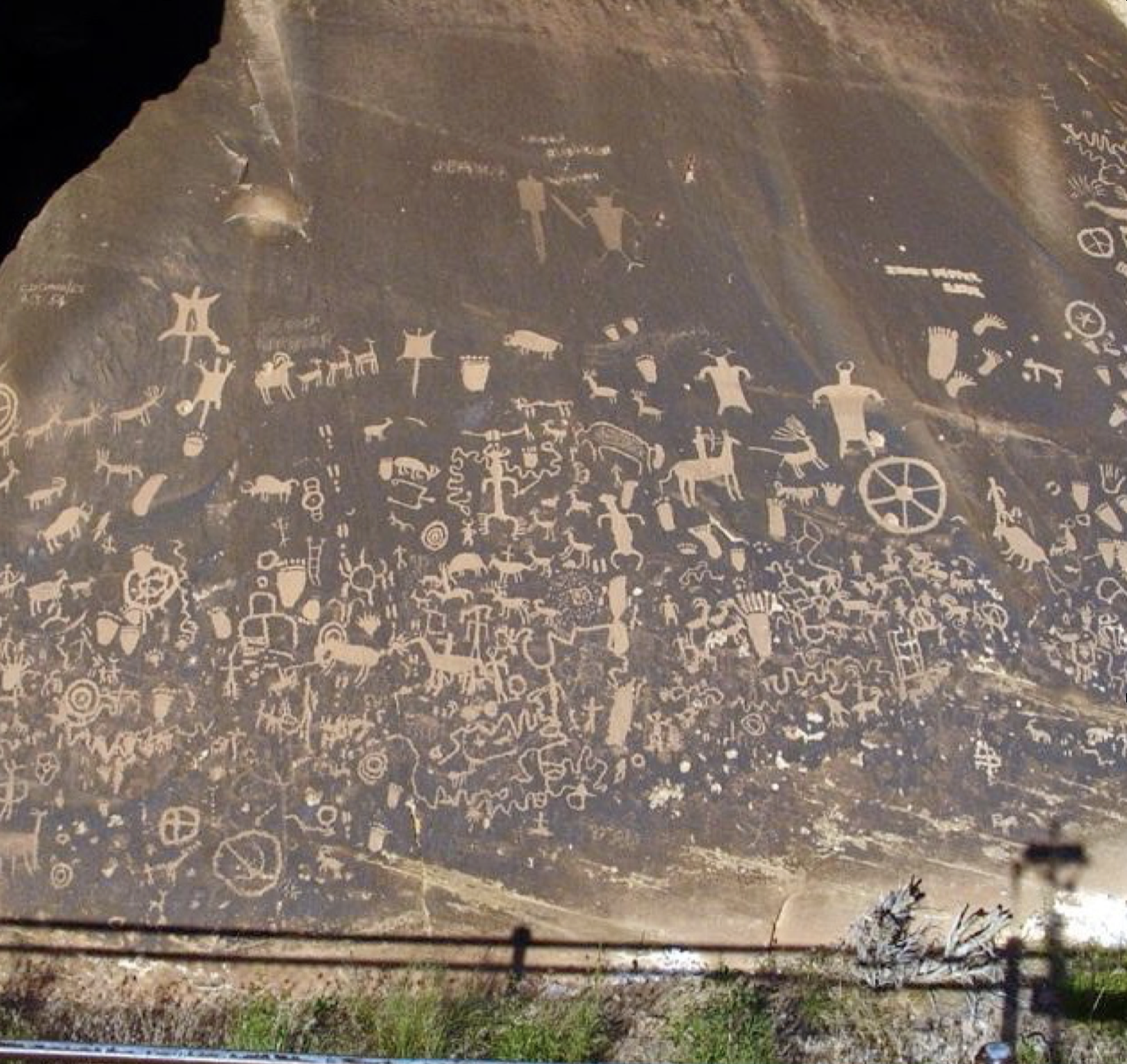何を見る?
What do you see?
誰かの言葉を理解できるかどうかは、言語能力の問題だけでありません。 母国語でもコミュニケーションは誤解がいっぱい起ります。
The ability to understand someone is not just a matter of language proficiency. Even language spoken natively is full of misunderstandings.
サルバドール・エリゾンドというメキシコ人の作家によると、「書く」 ことと「読む」こと、又は「話す」ことと「聞く」ことの間には大きな違いがあります。読むことと聞くことは必ず解釈の行為です。
In his essay Texto Legible Y Texto Visible, Salvador Elizondo asserts that, unlinke speaking or writing, the acts of listening and reading are, fundamentally, acts of interpretation.
このような曖昧さは私にとって象形文字の興味の基本です。
This sense of ambiguity is the basis of my interest in pictographs.
Newspaper Rock (新聞の岩) と呼ばれる有名なペトログリフの例 • アメリカ地質調査所発光(2003年)ユタ州、米国
歴史的な例を基にしながら、私自身が考案した象形文字を作品に使います。
The pictographs in my work are based on historical examples, but are my own creation.
様々なペトログリフと古代文字を研究しました。文字は、時代と場所によって異なりますが、なかには似ているものが確かにあります。そのことを、本当に印象深く感じました。
I researched a number of petroglyphs and ancient writing systems in the course of this project. Despite vast differences in culture, location, and time period, the symbols were, not infrequently, remarkably similar.
文字は意味がある?
Do the pictographs have meanings?
それぞれの文字をデザインする間、特定の意味を考えていました。でも、とりあえず、見る人に解釈して頂きたいと思います。
I did have a specific meaning in mind while designing each pictograph. But for the time being, I’d like for viewers to make their own interpretations.
将来には、オンラインのアンケートで回答を集計して文字に意味を与える予定です。もし参加したかったら、こちらとインスタの両方でアンケートへのリンクを投稿します。よろしくお願いします!
In the future, I plan to crowd source meanings for the pictograms using online surveys. If you’d like to participate, I will post a link to the survey both here and on Instagram. Stay tuned!









